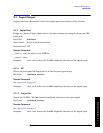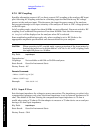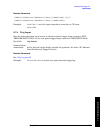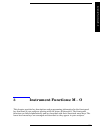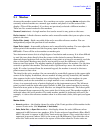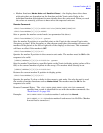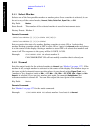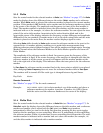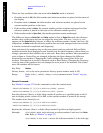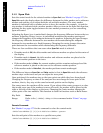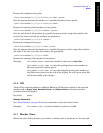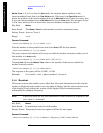
Chapter 3 179
Instrument Functions: M - O
Marker
Instrument Functions: M - O
• Marker functions (Marker Noise and Band/Intvl Power) - the display shows the values
with units that are dependent on the function and the Y-axis units. Refer to the
individual function descriptions for more details about the units used. When you read
the value out remotely you have to know what the expected units are.
Remote Command:
:CALCulate:MARKer[1]|2|3|4:MODE POSition|DELTa|BAND|SPAN|OFF
:CALCulate:MARKer[1]|2|3|4:MODE?
Sets or queries the marker control mode (see parameter list above).
:CALCulate:MARKer[1]|2|3|4:X <param>
Sets the marker X position to a specified point on the X axis in the current X-axis units
(frequency or time). If the frequency or time chosen would place the marker off screen, the
marker will be placed at the left or right side of the display, on the trace. This command
will have no effect if the marker is
OFF.
:CALCulate:MARKer[1]|2|3|4:X?
Queries the marker X position in the current x-axis units. The marker must be
ON for the
response to be valid.
[:SENSe]:MARKer[1]|2|3|4:X:POSition <param>
Sets the marker X position to a specified point on the X axis in display points (values of 0 to
600, or the current number of points in the sweep). The marker must already be on.
[:SENSe]:MARKer[1]|2|3|4:X:POSition?
Returns the current marker X position in display points.
:CALCulate:MARKer[1]|2|3|4:Y?
Queries the marker Y value or delta in the current y axis units. Can also be used to read
the results of marker functions such as
Marker Noise. The marker must be ON for the
response to be valid.
Remote Command Notes: The :CALC:MARK:PEAK:SEARC:MODE MAX|PAR command
specifies how a peak is identified for use with the marker commands. See
“Peak Search” on page 218.
Example: CALC:MARK:MODE POS selects marker 1 and sets it to
Normal.
CALC:MARK2:X 20 GHZ selects marker 2 and moves it to 20 GHz. (Marker
2 must first be turned on.)



